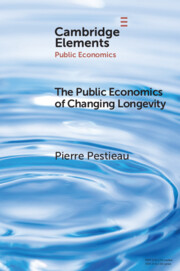Element contents
The Public Economics of Changing Longevity
Published online by Cambridge University Press: 12 January 2022
Summary
- Type
- Element
- Information
- Series: Elements in Public EconomicsOnline ISBN: 9781009170864Publisher: Cambridge University PressPrint publication: 10 February 2022
References
- 4
- Cited by



